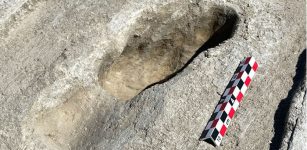On This Day In History: Battle Of Vinegar Hill Took Place – On June 21, 1798
AncientPages.com - On June 21, 1798, there was a military encounter between the Irish Rebellion and more than 13,000 British soldiers. They launched an attack on Vinegar Hill outside Enniscorthy, County Wexford, the largest camp and headquarters of the Wexford United Irish rebels.
The event is known as the Battle of Vinegar Hill (Irish: Cath Chnoc Fhíodh na gCaor).
 Battle of Vinegar Hill 1798. Source - Public Domain
Battle of Vinegar Hill 1798. Source - Public Domain
It marked a turning point in the rebellion, as it was the last attempt by the rebels to hold and defend ground against the British military. The battle was fought in two locations: on Vinegar Hill and in nearby Enniscorthy streets.
By June 18, the British had surrounded county Wexford with between 13,000 and 18,000 troops and were ready to pour into Wexford to crush the insurgency. The rebel leadership issued a call to all its fighters to gather at Vinegar Hill to meet the army in one decisive battle.
The number assembled was estimated at between 16,000 and 20,000. However, the majority lacked firearms and had to rely on pikes as their primary weapon. The camp also included many thousands of women and children who were staying there for protection against the rampaging military.
The battle began shortly before dawn with an artillery bombardment of Irish positions on the hill. Advance units quickly moved against rebel outposts under the attack and moved artillery closer as forward positions were secured. At least two mass charges were launched by the rebels, which failed to break the lines of the military and the situation on Vinegar Hill soon became desperate for the insurgents.
The tightening ring forced the rebels into an ever-shrinking area. It increased exposure to the constant bombardment, including new experimental delayed-fuse shells resulting in hundreds of dead and injured.
Meanwhile, a detachment of light infantry under the command of General Johnson attacked the town of Enniscorthy but met with fierce resistance as buildings in the city had been fortified. The initial attack was driven back with the loss of munitions and men. A second attack commenced with reinforcements, including cavalry, which retook the lost cannon and ammunition while incurring considerable casualties.
The Irish rebels were slowly driven out of the town but managed to hold the Slaney bridge and prevent the British from crossing. Although the bulk of the rebel army escaped, many were left behind and killed by cavalry and infantry attacks.
In addition to conventional casualties, there were also instances of rape of females in the rebel camp. Enniscorthy, rebel wounded were burned to death when soldiers set fire to a building used as a casualty station.
These atrocities may have been perpetrated in revenge for the execution by the rebels (mostly Protestants) loyalist prisoners in the preceding weeks. The Irish insurgents abandoned much of the supplies taken from surrounding areas. Thirteen cannons were re-captured by the British.
Casualties for the rebels have been variously reported, with estimates ranging from approximately 400 to around 1,200.
AncientPages.com




















